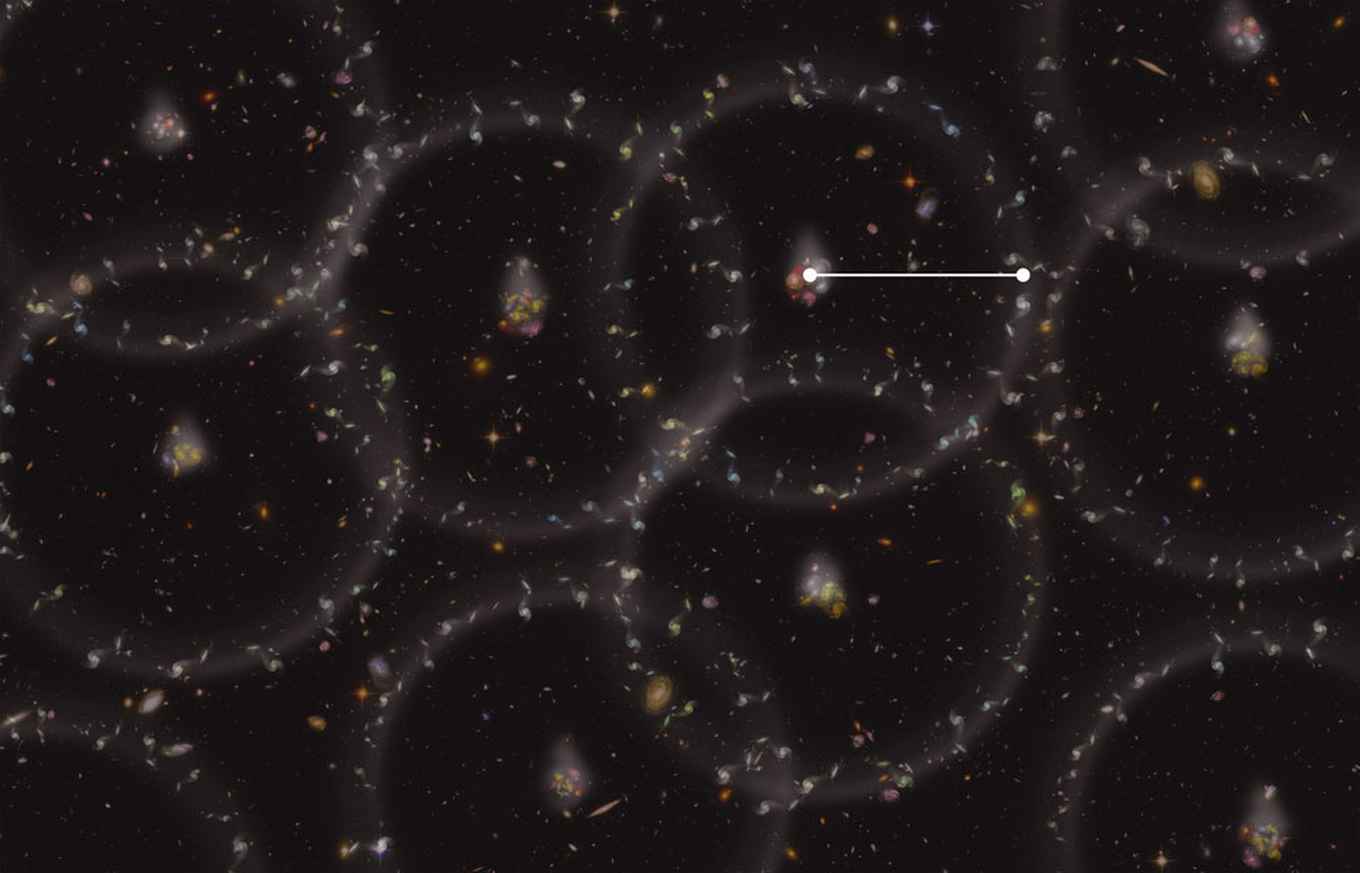Neutrinos seen in the clustering of galaxies
26 February 2019

When a pebble is dropped into a pond, it creates ripples on the surface of the water that travel outwards in concentric circles. Similarly, the regions in the primordial plasma with the largest densities produced shells of matter (mostly protons and electrons) propagating outwards at almost, but not quite, the speed of light. This outward push of matter was created by the large number of high-energy photons in the early universe.
Frozen shells
About 380,000 years after the Big Bang, when the free electrons were captured by protons to combine into electrically neutral hydrogen atoms, the spreading of these shells of matter stopped because the photons ceased to interact with the electrons. The resulting frozen shells of matter became the dense regions in which an excess of galaxies would eventually form. This predicts that an enhanced number of pairs of galaxies should be found at a separation of about 500 million light years, corresponding to the size of the frozen shells created in the early universe. In 2005, this effect was indeed observed for the first time in the distribution of galaxies measured by the Sloan Digital Sky Survey (SDSS).
A neutrino effect
The presence of the cosmic neutrino background affects the picture described above in a subtle, but relevant way. After the neutrinos decoupled from the rest of the primordial matter, they started travelling at the speed of light, slightly faster than the rest of the matter. The shells of neutrinos therefore overtook the shells of matter. Consequently, the gravitational pull of the neutrinos slightly deformed the matter shells, creating small distortions in the seeds for the formation of galaxies at much later times. This influence of the cosmic neutrinos on the large-scale structure of the universe should be detectable by carefully analyzing the clustering of galaxies.
In their paper, Baumann and collaborators studied new SDSS data of about 1.2 million galaxies, out to a distance of about 6 billion light years. Their statistical analysis confirms the expected signature of the bath of cosmic neutrinos that fills all of space. This new measurement constitutes an interesting confirmation of the standard cosmological model which links the production of neutrinos one second after the Big Bang to the clustering of galaxies billions of years later.
This research was partially funded by an NWO Vidi grant.
Reference
First constraint on the neutrino-induced phase shift in the spectrum of baryon acoustic oscillations, Daniel Baumann, Florian Beutler, Raphael Flauger, Daniel Green, Anže Slosar, Mariana Vargas-Magaña, Benjamin Wallisch and Christophe Yèche, Nature Physics, February 2019.